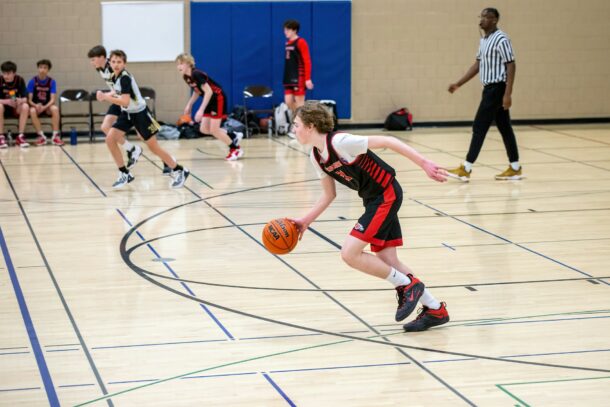The pick and roll (PNR) is one of the oldest and most popular plays in the history of basketball. Teams that master the skills involved in the pick and roll can become virtually unstoppable. However, a huge difference exists between mastering the required skills and just running through them.
There are four main reasons why the pick and roll has been so effective for decades:
- Creates size and/or speed mismatches
- Forces two defensive players to defend one offensive player which causes defenses to rotate and cover up
- Gets opposing defenders in foul trouble
- Lets you play your best offensive players regardless of “position”
5 Phases of the Basic Pick and Roll
Now most players think there are only two steps involved in the PNR – the pick and the roll – but in reality there are five separate and distinct phases. These phases include:
- Set up
- Pick
- Drive
- Roll
- Pass
Phase 1: Set Up
The set up required in executing an effective pick and roll on a stationary defender is much different than executing one on a moving defender.
If the defender is stationary, such as when the offensive player catches the ball on the wing, the picker must initiate the set up. However, if the defender is moving, such as when running a pick and roll in transition or out of the Horns set, it’s crucial that the ball handler initiate the set up by taking the correct angle.
Phase 2: Pick
The pick should be set with your knees bent and your feet wider than shoulder width. Guys should have their arms extended down over the groin with one hand placed over the other. Girls should have their arms placed in an “X” so that each hand is placed on the opposite collar bone and the chest is protected. Either way all hands and elbows need to be positioned and kept inside the body to reduce the risk of getting an offensive foul.
Don’t lean into the defense, If the ball handler does not take a good angle and drive his defender into the pick, the picker should never overcompensate by moving.
Phase 3: Drive
A pick and roll is only going to consistently work if the ball handler has the mind set of driving to score first and passing second! A driver who is not a constant threat to score will never force two defenders to guard him which will greatly reduce the effectiveness of the play.
The biggest mistake players make is driving too early before the picker has come to a complete stop and established a legal position. When this happens it almost always results in an offensive foul called on the picker.
Get as low as possible on the drive. Work on getting your inside shoulder as low or lower than your teammate’s (Picker) hip. Drive so close to your teammate that you actually make contact with his hip.
Once you clear the pick, the goal is to execute a straight line drive to the basket. The defense may hard hedge to throw you off line but you should keep your dribble alive, recover as soon as possible and attack the rim. Remember, the shortest distance between two points is always a straight line!
Phase 4: Roll
Once the ball handler has cleared the pick, the picker should open up to the ball and roll in the same direction as the drive. The key to a highly effective roll is to maintain contact with the defender as long as possible.
Many on ball defenders, especially younger ones, will usually take the path of least resistance and try to slide underneath the pick. When this happens a quick and physical roll will essentially serve as a “moving screen” and keep the ball handler’s defender completely out of the play.
Phase 5: Pass
The first four steps can be executed perfectly but if the ensuing pass is thrown poorly the entire sequence becomes a total failure. Since the pass must be thrown quickly and accurately a one handed bounce pass thrown right off the dribble is usually the best option. Chest passes are usually deflected or stolen in this situation and lob passes are often thrown too short or behind the roller.
Pick and roll duos like Stockton & Malone and Parker & Duncan have made this play look much easier than it really is over the years. Don’t let its simplicity fool you into thinking than anyone can do it by just walking out on to the court.
Each of the five steps takes hundreds of repetitions to master but once you do you will be able to impact every game you enter.
Related: Better Basketball – Point Motion Sets
Resources:
If you found this useful, don’t forget to check out additional blog posts at TeachHoops.com. Also, check out TeachHoops on Facebook, Twitter, Instagram and YouTube.








